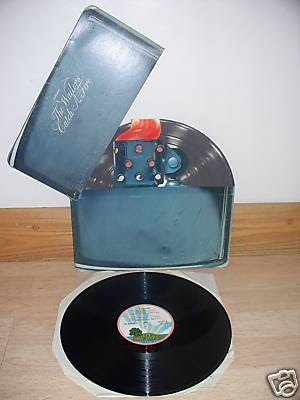UNDERNEATH THE COVERS: THE WAILERS "CATCH A FIRE" (Original Zippo Cover)
The early edition of the Wailers classic 1973 album Catch a Fire holds a very special place In the pantheon of memorable (and valuable) record album covers—not just for its inventive design, but because it was a work of art that also had functionality.
As album covers go, Catch
a Fire was an aim-for-the-stars creative idea. It was also a
production and artistic challenge that couldn’t be sustained.
Two years earlier, Andy
Warhol gave record buyers a pants zipper you could pull up and down on the cover
of the Rolling Stones 1971 Sticky Fingers album. But Catch a Fire upped the ante and gave reggae music fans an interactive
album cover that looked and operated like a great big Zippo cigarette lighter, minus the flames, of course—although they were
artistically depicted.
At the time, Island Records owner Chris Blackwell believed
that reggae’s relatively small cult following in the early 70’s was on the
verge of explosive growth. His confidence was bolstered by signing The Wailers
in 1972, then revered in Jamaica. Bob Marley and Peter Tosh brought a Lennon
and McCartney dynamic to the band, as Marley was smoother and sweeter in delivering
musical messages, while the Lennon-like Tosh pulled no punches in attacking the
establishment or embracing controversial political causes. Tosh departed soon after Catch a Fire’s release to
carve out his own musical fame, and the band was renamed Bob Marley and the Wailers.
The music of Catch a
Fire, mixed and polished with a broader, non-Jamaican audience in mind, was the
big bang that paved the way for reggae music to become Jamaica’s biggest export
in the mid to late 70’s. And, the celebrated “Zippo” album cover created a
strong PR and media buzz for the band, decades before YouTube, Spotify or hashtags.
Although it was an innovative idea, the album’s functional
design proved difficult to manufacture because of the lack of technology that
could properly join the two halves comprising the lighter together. As a
result, each LP had to be
hand assembled, which caused serious and expensive production issues.
hand assembled, which caused serious and expensive production issues.
 |
| The Plain Jane Alternate "Post Zippo" Cover |
The famed Zippo cover’s journey as a highly desired rarity
among Marley fans and record collectors was also fueled by a mechanical aspect. Most of the lucky few who owned the Zippo experienced a broken hinge over time from less-than-careful
handling of the record. Without the hinge, the album cover wouldn’t flip open
as intended, or reflect the way a Zippo lighter operated.
As a result, the collector’s market for the album divided into two distinct segments:
-- Those copies still in existence that have a perfectly
operating cover with a hinge that is fully intact,
-- And those that have a broken hinge.
(I know, this is probably too much information.)
(I know, this is probably too much information.)
A Zippo cover with a
broken hinge will fetch about $100.
If you treated your Zippo cover like a newborn baby and the
hinge is fully operating and intact, you could expect to sell your copy within
a range of $300 to $500 --as long as the record inside is also in pretty good condition.
 |
| Zippo Reborn--With Bar Code Giveaway |
Zippo Reborn
Interestingly, there have been two successful attempts at recreating the Zippo LP cover in recent years. A European reissue of the original cover came out in 2001, and more recently, a Japanese Zippo edition came out late last year that offered a “Jamaican version” of the album’s songs—featuring early studio mixes and alternate tracks. Both of those reissues sold out quickly and also command high prices on the collector’s market.






No comments:
Post a Comment
Comments welcome!